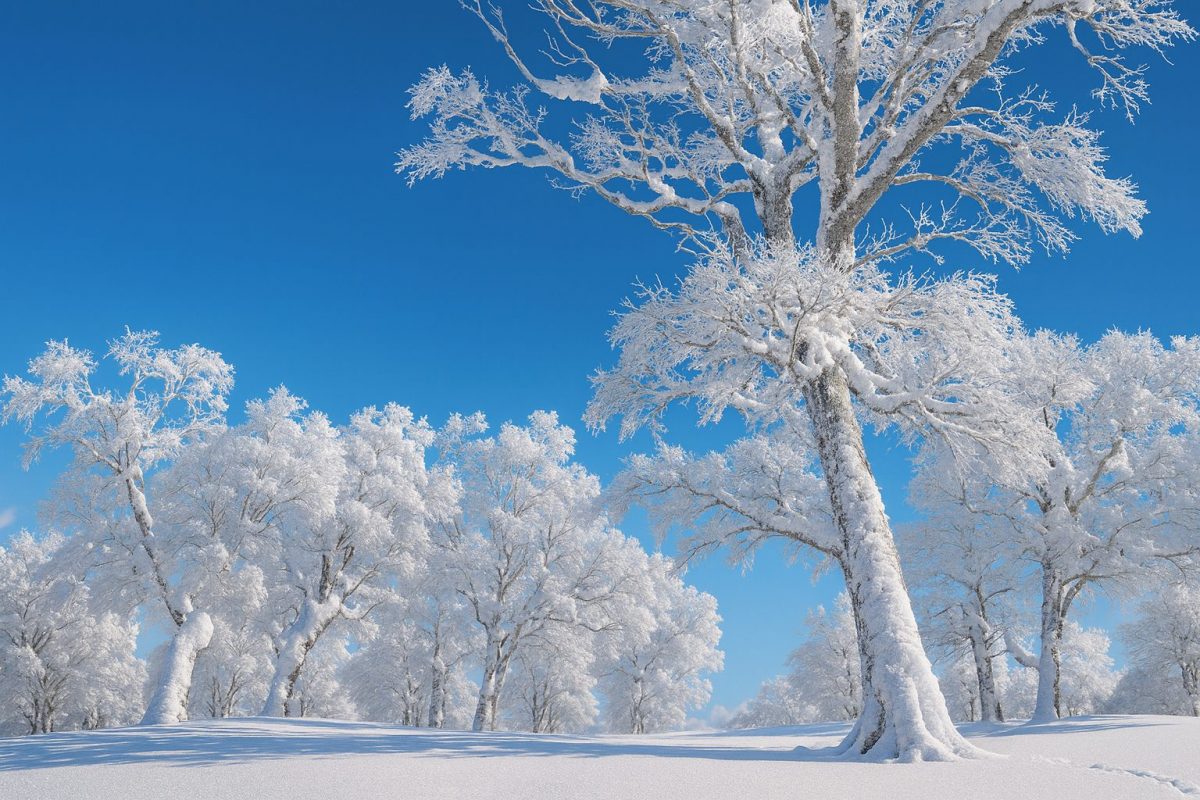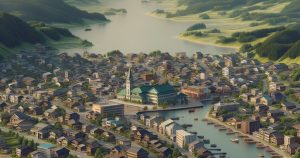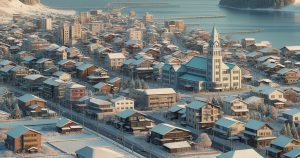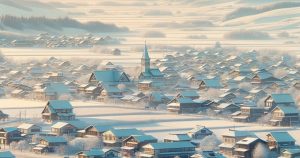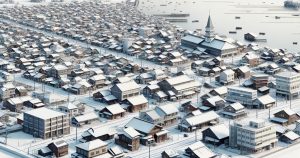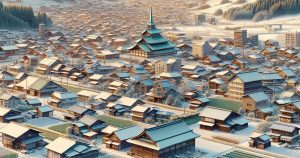| population | 24,319 peoples |
|---|---|
| area | 534.86 km² |
| population density | 45.5 peoples/km² |
Have you ever heard of Nayoro City, a charming town located in the northern part of Hokkaido, Japan? Blessed with vast natural beauty and a long, harsh winter, Nayoro is known for its unique seasonal festivals and resilient people. The city lies in the Nayoro Basin and has developed as a major agricultural hub. Its primary industry is farming—especially rice cultivation. Nayoro is one of Japan’s top producers of glutinous rice, which is used in famous Japanese sweets such as “Akafuku Mochi” and “Yukimi Daifuku.” In addition, local farmers cultivate asparagus and pumpkins, taking full advantage of the cold climate and fertile soil.
Despite being one of the coldest cities in Japan—where temperatures can drop below -30°C in winter—Nayoro is famous for spectacular natural phenomena such as diamond dust and the sun pillar (a vertical beam of light reflecting off ice crystals). Residents celebrate life amid the snow through community events like the “Tesshi Nayoro Festival” and the “Nayoro Snow Quality No.1 Festival,” which bring locals and visitors together to enjoy the season. With its hot springs, ski resorts, and observatories, Nayoro is a destination where nature, science, and culture coexist beautifully.
Culture and Traditions
Nayoro City has a history stretching back to the Meiji period (late 19th century), when pioneers began developing the land. Despite the severe environment, they built a strong community centered around agriculture and cooperation. Since becoming a city after World War II, Nayoro has continued to foster close community ties and preserve its cultural identity.
The local dialect, known as “Nayoro-ben,” reflects the warmth and humor of its people. Many regional festivals keep traditions alive and connect generations. The summer highlight is the “Tesshi Nayoro Festival”, a vibrant event filled with taiko drumming, parades, and fireworks that light up the summer night.
In February, Nayoro embraces its identity as the “City of Snow” through the “Nayoro Snow Quality No.1 Festival.” The event features large snow sculptures, international carving competitions, and candle-lit snow lanterns, showcasing the locals’ creativity and endurance. These traditions reveal the spirit of Nayoro—strong, kind, and deeply connected to nature.
Local Specialties
- Glutinous Rice (Mochi Rice): Nayoro is Japan’s northernmost major producer of mochi rice. It is highly valued for its quality and flavor and is used in many renowned Japanese sweets. Visitors can enjoy local mochi products at “Michi-no-Eki Mochigome no Sato Nayoro”.
- Asparagus: Grown in the crisp northern air, Nayoro asparagus is exceptionally sweet and tender. It is harvested from May to June and sold fresh at local markets and roadside stations.
- Ebisu Pumpkin: A signature Hokkaido brand, the “Ebisu” pumpkin from Nayoro has rich sweetness and creamy texture, perfect for desserts and local cuisine.
- Stewed Jingisukan: A local twist on the classic Hokkaido lamb dish, Nayoro’s version is simmered with vegetables in a savory sauce—a hearty comfort food for the cold climate.
- Nayoro Wine: Produced at Shinga Winery, Japan’s northernmost winery, Nayoro’s cool climate wines are elegantly balanced and gaining national recognition.
Annual Events
- Tesshi Nayoro Festival (early August): Named after the Teshio River, this major summer festival features taiko drumming, dancing, parades, and fireworks—uniting the whole city in celebration.
- Nayoro Snow Quality No.1 Festival (mid-February): A signature winter event showcasing snow sculptures, an international carving contest, and fireworks. Visitors can experience the beauty of Hokkaido’s pure snow.
- Chiebun Sunflower Festival (August): The Chiebun district transforms into a sea of yellow sunflowers, attracting photographers and nature lovers. (View on Google Maps)
- Shirakaba Festival (June): A spring event celebrating Nayoro’s natural environment with live music, local food, and community gatherings.
- Furen Furusato Festival (early September): A long-standing local tradition in the Furen area featuring parades, markets, and the annual Furen Shrine Festival.
Access
- By Air: The nearest airport is Asahikawa Airport, about a two-hour drive (approx. 120 km) from Nayoro. Rental cars and highway buses are available.
- By Train: Nayoro Station on the JR Soya Main Line connects the city to Sapporo via the limited express “Soya” or “Sarobetsu” in about 3.5 hours.
- By Car: Approximately a 4-hour drive from Sapporo via the Dōō Expressway, exiting at Nayoro IC for direct access to the city center.
- By Bus: The “Highway Nayoro-go” express bus departs from Asahikawa Station, taking around 2.5 hours. Operated by Dohoku Bus.
- By Bicycle: Nayoro offers scenic cycling routes, especially the stretch between Nayoro and Bifuka, which is popular among long-distance cyclists during summer.
Tourist Attractions
- Nayoro Park – A lush city park where visitors can enjoy cherry blossoms in spring, greenery in summer, colorful foliage in autumn, and serene snow landscapes in winter.
- Nayoro Onsen Sunpillar – A popular hot spring facility with a restaurant and lodging. Visitors can sometimes witness the famous sun pillar phenomenon on cold winter mornings.
- Nayoro City Observatory “Kitasubaru” – Home to one of Japan’s largest optical telescopes (1.6 m). Offers stargazing sessions and public astronomy events.
- Nayoro Piyashiri Ski Resort – Renowned for having “Japan’s best snow quality.” Features ski jumps, cross-country trails, and family-friendly slopes.
- Nayoro Northern Museum – Exhibits artifacts on local history, railways, and pioneering life. Includes the historic “Kimaroki” train display.
- Michi-no-Eki Mochigome no Sato Nayoro – A roadside station celebrating Nayoro’s rice heritage. Offers restaurants, souvenir shops, and local farm products.
